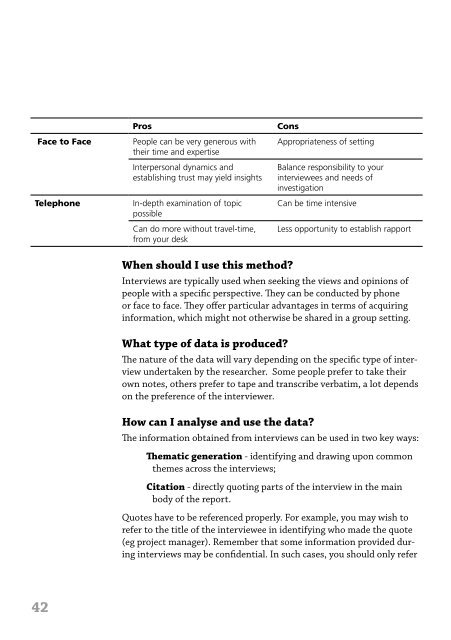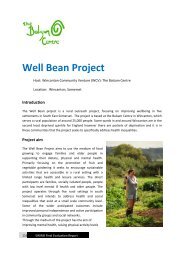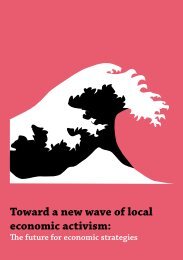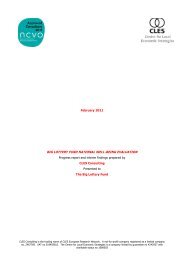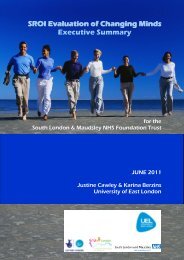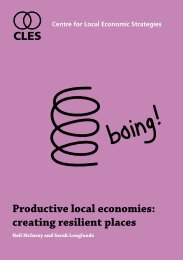Research Methods Handbook.pdf - CLES
Research Methods Handbook.pdf - CLES
Research Methods Handbook.pdf - CLES
Create successful ePaper yourself
Turn your PDF publications into a flip-book with our unique Google optimized e-Paper software.
ProsConsto the broad theme or argument being made rather than identifyingwho said it.Face to FaceTelephonePeople can be very generous withtheir time and expertiseInterpersonal dynamics andestablishing trust may yield insightsIn-depth examination of topicpossibleAppropriateness of settingBalance responsibility to yourinterviewees and needs ofinvestigationCan be time intensiveFurther readingTop tips for interviewing – <strong>Research</strong> Observatory, University of theWest of Englandhttp://ro.uwe.ac.uk/RenderPages/RenderLearningObject.aspx?Context=7&Area=1&Room=3&Constellation=25&LearningObject=124Can do more without travel-time,from your deskLess opportunity to establish rapportWhen should I use this method?Interviews are typically used when seeking the views and opinions ofpeople with a specific perspective. They can be conducted by phoneor face to face. They offer particular advantages in terms of acquiringinformation, which might not otherwise be shared in a group setting.What type of data is produced?The nature of the data will vary depending on the specific type of interviewundertaken by the researcher. Some people prefer to take theirown notes, others prefer to tape and transcribe verbatim, a lot dependson the preference of the interviewer.How can I analyse and use the data?The information obtained from interviews can be used in two key ways:Thematic generation - identifying and drawing upon commonthemes across the interviews;Citation - directly quoting parts of the interview in the mainbody of the report.Quotes have to be referenced properly. For example, you may wish torefer to the title of the interviewee in identifying who made the quote(eg project manager). Remember that some information provided duringinterviews may be confidential. In such cases, you should only referDiscussion groupsWhat is the method?Discussion groups (also known as ‘focus’ groups) are an example of atechnique imported into social research from market research. Theyhave been widely used in political circles to “road test” policies. A discussiongroups consists of a number of individuals you invite to discusstheir views on a particular topic, typically involving between 6 and 12people, which is conducted specifically to get a group of people’s viewson a subject. Groups can be constructed in order to attempt to recreatedemographics.When should it be used?Discussion groups are best applied when rich, in-depth material froma number of people is required. Being part of a group often createsa more relaxed atmosphere than a one-to-one interview. Therefore,information gathered from discussion groups is often more varied thanif participants had been interviewed on a one-to-one basis. Anotheradvantage of using discussion groups, as opposed to one-to-oneinterviews, is that they provide in-depth information from a numberof individuals simultaneously, making it a time effective method ofgathering data.42 43


